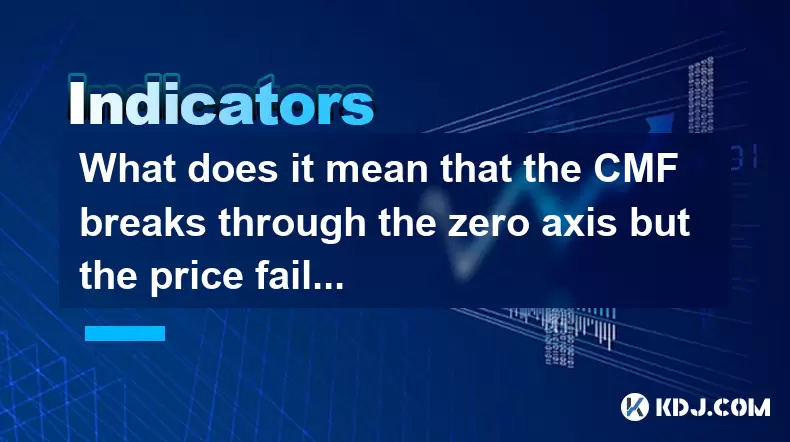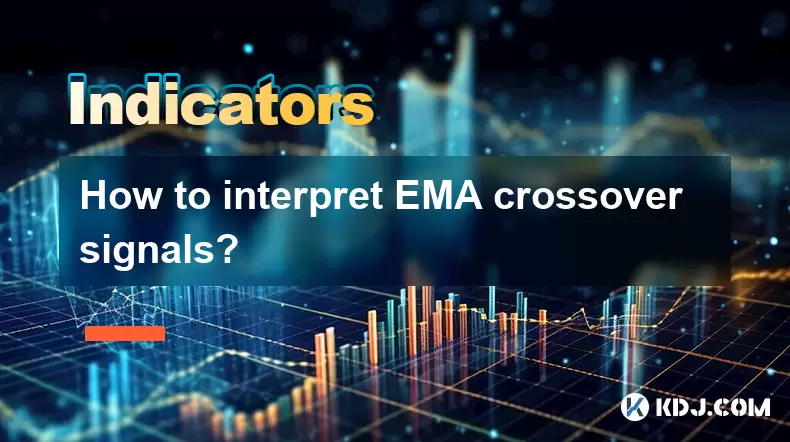-
 Bitcoin
Bitcoin $118300
-0.58% -
 Ethereum
Ethereum $3825
0.11% -
 XRP
XRP $3.137
-0.71% -
 Tether USDt
Tether USDt $0.9999
-0.01% -
 BNB
BNB $803.9
-3.37% -
 Solana
Solana $181.5
-1.94% -
 USDC
USDC $0.9999
0.01% -
 Dogecoin
Dogecoin $0.2238
-2.51% -
 TRON
TRON $0.3358
2.12% -
 Cardano
Cardano $0.7844
-2.16% -
 Hyperliquid
Hyperliquid $43.31
-1.48% -
 Sui
Sui $3.807
-4.04% -
 Stellar
Stellar $0.4203
-1.96% -
 Chainlink
Chainlink $17.79
-3.00% -
 Bitcoin Cash
Bitcoin Cash $567.8
-1.34% -
 Hedera
Hedera $0.2614
-4.30% -
 Avalanche
Avalanche $24.19
-4.46% -
 Litecoin
Litecoin $109.2
-0.74% -
 UNUS SED LEO
UNUS SED LEO $8.969
-0.01% -
 Toncoin
Toncoin $3.404
3.97% -
 Ethena USDe
Ethena USDe $1.001
-0.01% -
 Shiba Inu
Shiba Inu $0.00001307
-3.19% -
 Uniswap
Uniswap $10.33
-1.23% -
 Polkadot
Polkadot $3.884
-4.06% -
 Monero
Monero $312.9
-1.87% -
 Dai
Dai $1.000
0.01% -
 Bitget Token
Bitget Token $4.537
-2.24% -
 Pepe
Pepe $0.00001156
-3.40% -
 Cronos
Cronos $0.1437
-0.89% -
 Aave
Aave $282.8
-2.77%
What does it mean that the CMF breaks through the zero axis but the price fails to hit a new high?
When CMF crosses above zero but price fails to make a new high, it signals potential weakness despite buying pressure, suggesting caution and need for confirmation.
Jul 29, 2025 at 11:28 am

Understanding the Chaikin Money Flow (CMF) Indicator
The Chaikin Money Flow (CMF) is a technical analysis tool developed by Marc Chaikin to measure the accumulation and distribution of a security over a specified period, typically 20 or 21 days. It combines price and volume to determine whether money is flowing into or out of an asset. The CMF is calculated by taking the sum of the Money Flow Volume over a set period and dividing it by the sum of volume over the same period. The resulting value oscillates around a zero line, with readings above zero indicating buying pressure and readings below zero indicating selling pressure. When the CMF crosses above the zero axis, it suggests that institutional or smart money is accumulating the asset, which is generally interpreted as a bullish signal.
Significance of CMF Breaking the Zero Axis
A break above the zero line in the CMF indicates that the average closing price during the period was higher than the midpoint of the day’s range, combined with rising volume. This suggests that buyers are in control and that there is sustained demand. Traders often interpret this as confirmation of bullish momentum, especially when it coincides with rising prices. However, the signal gains more weight when it aligns with price action forming new highs. When the CMF breaks above zero but the price does not reach a new high, it introduces a divergence that demands closer scrutiny. This scenario may imply that although volume-backed buying pressure is increasing, the market lacks the strength to push prices beyond previous resistance levels.
Price Fails to Make a New High: What It Signals
When the price fails to hit a new high despite the CMF crossing above zero, it reflects a lack of follow-through from buyers at higher price levels. This could mean several things: resistance is too strong, profit-taking is occurring near previous peaks, or larger market participants are accumulating quietly without pushing the price up aggressively. In such cases, the divergence between volume-driven momentum (CMF) and price action becomes critical. Even though volume supports upward movement, the inability of the price to surpass earlier highs suggests weakening bullish conviction. This type of setup often precedes a consolidation phase or a potential reversal if the divergence persists.
How to Interpret the Divergence: Step-by-Step Analysis
To properly assess this scenario, traders should conduct a detailed technical review using the following steps:
- Confirm the CMF crossover: Ensure the CMF has clearly moved above the zero line and remained there for at least two to three periods to avoid false signals from volatility.
- Compare price structure: Examine whether the current price peak is lower than or equal to the previous high, indicating failure to make a new high.
- Analyze volume patterns: Check if volume during upward moves is decreasing despite the positive CMF, which may suggest fading enthusiasm.
- Review support and resistance levels: Identify nearby resistance zones that could be capping upward movement.
- Cross-verify with other indicators: Use tools like RSI, MACD, or on-balance volume (OBV) to see if they confirm or contradict the CMF signal.
- Monitor candlestick patterns: Look for bearish reversal patterns (e.g., shooting star, bearish engulfing) near resistance that support the idea of rejection.
This multi-layered approach helps determine whether the divergence is a temporary pause or a sign of deeper weakness.
Trading Implications and Risk Management
Traders observing a CMF breakout above zero without a new price high should exercise caution rather than assume a bullish continuation. Opening long positions based solely on the CMF signal could be risky. Instead, consider the following actions: - Wait for confirmation: Delay entry until the price either breaks past resistance with strong volume or shows a pullback with sustained CMF support.
- Set tight stop-loss orders: If entering a trade, place stops just below recent swing lows to limit downside exposure.
- Use position scaling: Enter partial positions initially and add only if price confirms upward momentum.
- Watch for breakdowns: A drop in CMF back below zero after a brief crossover could signal failed accumulation and impending distribution.
- Monitor market context: Evaluate broader market conditions and sector performance, as external factors can suppress individual asset price movement even with positive internal momentum.
Common Misinterpretations and How to Avoid Them
One common mistake is treating the CMF zero-line crossover as a standalone buy signal without considering price structure. Another is assuming that volume-backed momentum will inevitably lead to higher prices. In reality, markets often consolidate after accumulation phases, and price may remain range-bound despite positive CMF. Traders may also overlook the impact of macroeconomic news or exchange-specific events that suppress price action despite favorable technicals. To avoid these pitfalls: - Always correlate CMF movements with price levels and chart patterns.
- Avoid trading against clear resistance, even with bullish indicators.
- Recognize that accumulation can occur without immediate price appreciation, especially in low-liquidity assets.
Frequently Asked Questions
Can CMF remain above zero even if the price is flat?
Yes. The CMF measures money flow based on closing prices relative to the day’s range and volume. If an asset consistently closes in the upper half of its daily range on rising volume—even without significant price increases—the CMF can stay above zero, reflecting quiet accumulation.What timeframes are best for observing CMF zero crossovers?
The 21-day CMF is widely used on daily charts for swing trading. However, for day trading, a 10-period CMF on 1-hour or 15-minute charts can provide timely signals. The key is aligning the CMF period with your trading horizon and confirming signals with price action.Does a CMF zero crossover always require a price breakout to be valid?
No. A CMF crossover above zero can be valid without an immediate price breakout, especially during basing or consolidation phases. It indicates underlying strength, but traders should wait for price confirmation before acting.How does CMF differ from OBV in this context?
While both measure volume-based momentum, CMF incorporates price location within the day’s range, making it more sensitive to buying/selling pressure near highs or lows. OBV is a cumulative sum of volume and may not reflect short-term shifts as clearly as CMF.
Disclaimer:info@kdj.com
The information provided is not trading advice. kdj.com does not assume any responsibility for any investments made based on the information provided in this article. Cryptocurrencies are highly volatile and it is highly recommended that you invest with caution after thorough research!
If you believe that the content used on this website infringes your copyright, please contact us immediately (info@kdj.com) and we will delete it promptly.
- Coinbase, Circle, and the Power of Partnership: A New Era for Crypto?
- 2025-07-30 12:30:12
- Manyu Mania: Riding the Wave of the #FreeManyu Cryptocurrency Movement
- 2025-07-30 12:30:12
- Bitcoin Price Drop: Navigating the Dip with Corporate Strategies
- 2025-07-30 07:30:12
- BNB's Bullish Cycle: ChatGPT Weighs In on the Future
- 2025-07-30 06:50:12
- XRP's Wild Ride: Open Interest, Price Crash Fears, and What's Next
- 2025-07-30 07:50:12
- SEC Greenlights In-Kind Creations: A Game Changer for Bitcoin ETPs?
- 2025-07-30 07:50:12
Related knowledge

What are the main differences between WMA, SMA, and EMA in crypto?
Jul 30,2025 at 02:50pm
Understanding the Role of Private Keys in Cryptocurrency WalletsEvery cryptocurrency wallet operates based on cryptographic principles, with the priva...

How is the WMA indicator calculated in cryptocurrency trading?
Jul 30,2025 at 02:35pm
Understanding the Weighted Moving Average (WMA) in Cryptocurrency TradingThe Weighted Moving Average (WMA) is a technical analysis tool widely used in...

How does news and market sentiment affect EMA signals in crypto?
Jul 30,2025 at 03:00pm
Understanding EMA and Its Role in Crypto TradingThe Exponential Moving Average (EMA) is a widely used technical indicator in cryptocurrency trading th...

What are the advantages of using EMA in volatile crypto markets?
Jul 30,2025 at 12:29pm
Understanding EMA in the Context of Cryptocurrency TradingThe Exponential Moving Average (EMA) is a widely used technical indicator in cryptocurrency ...

What is a good EMA for medium-term crypto trades?
Jul 30,2025 at 02:29pm
Understanding EMA in Cryptocurrency TradingThe Exponential Moving Average (EMA) is a widely used technical indicator in cryptocurrency trading that gi...

How to interpret EMA crossover signals?
Jul 30,2025 at 01:56pm
Understanding EMA and Its Role in Technical AnalysisThe Exponential Moving Average (EMA) is a widely used technical indicator in the cryptocurrency tr...

What are the main differences between WMA, SMA, and EMA in crypto?
Jul 30,2025 at 02:50pm
Understanding the Role of Private Keys in Cryptocurrency WalletsEvery cryptocurrency wallet operates based on cryptographic principles, with the priva...

How is the WMA indicator calculated in cryptocurrency trading?
Jul 30,2025 at 02:35pm
Understanding the Weighted Moving Average (WMA) in Cryptocurrency TradingThe Weighted Moving Average (WMA) is a technical analysis tool widely used in...

How does news and market sentiment affect EMA signals in crypto?
Jul 30,2025 at 03:00pm
Understanding EMA and Its Role in Crypto TradingThe Exponential Moving Average (EMA) is a widely used technical indicator in cryptocurrency trading th...

What are the advantages of using EMA in volatile crypto markets?
Jul 30,2025 at 12:29pm
Understanding EMA in the Context of Cryptocurrency TradingThe Exponential Moving Average (EMA) is a widely used technical indicator in cryptocurrency ...

What is a good EMA for medium-term crypto trades?
Jul 30,2025 at 02:29pm
Understanding EMA in Cryptocurrency TradingThe Exponential Moving Average (EMA) is a widely used technical indicator in cryptocurrency trading that gi...

How to interpret EMA crossover signals?
Jul 30,2025 at 01:56pm
Understanding EMA and Its Role in Technical AnalysisThe Exponential Moving Average (EMA) is a widely used technical indicator in the cryptocurrency tr...
See all articles

























































































